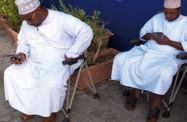A measured approach to rolling out the infrastructure for Oman’s advanced broadband network is part of a wider policy of managed development towards becoming a knowledge-based economy.
Oman continues to perform strongly in studies into IT penetration and usage, with a recent report issued by the World Economic Forum (WEF), in conjunction with the international business school INSEAD, ranking the Sultanate 40th globally for IT readiness, the same as in 2013.
In its Global Information Technology Readiness Report 2014 (GITR), the WEF found Oman was making solid progress in transitioning to a knowledge-based society, with the government having a strong commitment to placing IT at the centre of state policy and the economy.
While Oman did not move up or down the GITR ladder this year, with an additional four countries covered in the report, taking the total to 148, and with many of those nations bracketed around the Sultanate also having rolled out advances during the past year, maintaining its solid ranking should be considered an achievement in itself.
Improving fixed-line services
According to Said Al Mandhari, the CEO of the Oman Broadband Company (OBC), the state company established to oversee the roll-out of the country’s broadband network and to assist in expanding the digital economy, having to provide coverage to a population of some 3m scattered over a large area makes putting in place a dedicated fibre optic cable network a difficult task.
“Oman is a huge country with the physical infrastructure still being built,” Al Mandhari told OBG. “This is a challenge for us because the last thing we want to do is to dig twice, once to lay a pipe and the second to lay the cable. The trick here is to work with the utility providers to integrate the IT infrastructure into the physical infrastructure.”
Providing a fixed-line system to as much of Oman as possible is essential to ensure the greatest benefits for the economy in the future, he said. “The potential speed on a mobile is not comparable to fixed-line speed and will not be able to handle the bandwidth demands for real economic growth,” said Al Mandhari.
Under OBC’s plans for broadband and IT development, by 2020, 80% of Muscat will be linked to the national fibre optic network, up from the 25% forecast by the end of this year, with 30% of other urban areas also being connected. After a further 10 years, almost all of Oman will have broadband coverage of one form or another, with Muscat and all urban areas of the country having a 95% connectivity rate via fibre optic, along with 30% of rural and remote regions, though these areas will also have 95% coverage through other avenues, such as satellite, wireless and mobile broadband.
Boost for business
Such expanded high-speed broadband access will open up new opportunities for the Omani economy, according to Alain Sawaya, managing partner at Oman Data Park, the country’s first integrated managed service provider.
“The fibre network will be very important,” he told OBG. “Copper wire can transmit around 10 mbps steadily, but in order to stream movies or properly utilise next generation IT solutions you need more than 50 mbps, which only fibre can take.”
One area that Sawaya identified as having high levels of investment and growth potential is outsourcing. “The more IT services, and the easier they are to use the more demand and uptake of outsourcing services there will be,” he said. “IT is becoming more important, it just needs to be demystified for companies.”
Growth potential along the services chain
While the GIRT report showed that Oman scored well in public and private usage of IT, the WEF study also underscored areas of business opportunity to service and equipment suppliers. According to the study, 62.7% of households in the Sultanate have access to a personal computer, with 60% using the internet. This suggests that there is still strong marketing potential for computers and associated technology, as well as for internet subscription packages for home access.
One area where there is already a heavy concentration of technology is mobile handsets, with penetration rates of just under 160%. However, here too there are openings for service and technology suppliers. With Oman steadily moving toward blanket coverage of mobile broadband services, demand for advanced smartphones and tablets, along with applications and support services, is set to increase to match the spread of access availability.
Follow Oxford Business Group on Facebook, Google+ and Twitter for all the latest Economic News Updates. Or register to receive updates via email.

